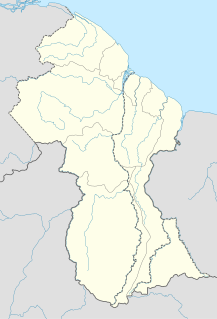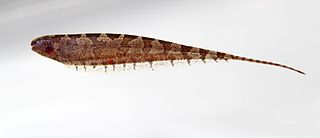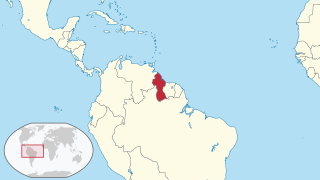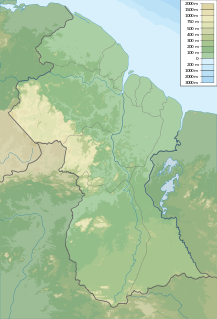This article is about the demographic features of Guyana, including population density, ethnicity, education level, health of the populace, economic status, religious affiliations and other aspects of the population.
ARB, ARb or arb may refer to:
The Nanai people are a Tungusic people of East Asia and the Russian Far East, who have traditionally lived along Heilongjiang (Amur), Songhuajiang (Sunggari) and Wusuli River on the Middle Amur Basin. The ancestors of the Nanai were the Jurchens of northernmost Manchuria.

Palauan is a Malayo-Polynesian language native to the Republic of Palau, where it is one of the two official languages, alongside English. It is widely used in day-to-day life in the country. Palauan is not closely related to other Malayo-Polynesian languages and its exact classification within the branch is unclear.
Kapóng is a Cariban language spoken mainly in Guyana, most commonly in the region of the Upper Mazaruni. Though many speakers do not live in villages, there are a number of population centers, notably Kamarang, Jawalla, Waramadong, and Kako. There are two dialects, Akawaio and Patamona.

The Yami people, also known as the Tao people, are an Austronesian ethnic group native to the tiny outlying Orchid Island of Taiwan. These indigenous peoples have been more commonly recognized as the Yami people, following Japanese anthropologist Torii Ryuzo's coining of the name. However, as a collective, these Orchid Island inhabitants typically prefer "Tao people" as their group identifier. They are part of the Austronesian family, and designated members of the Taiwanese indigenous peoples. Despite being linked to both indigenous Taiwanese and Filipino populations, the Tao people remain unique in their customs and cultural practices.

El Paso is a village in the Potaro-Siparuni Region of Guyana. The village is on the Potaro River to the west of Tumatumari Falls, and Tumatumari Landing.

The Hypopomidae are a family of fishes in the order Gymnotiformes known as the bluntnose knifefish. They may also be called grass or leaf knifefishes. These electric fish are not often eaten, of little commercial importance, rarely kept as aquarium fish, and poorly studied; however, species in this family may constitute a significant fraction of the biomass in the areas they inhabit.

The Patamona are an Amerindian tribe native to the Pakaraima Mountains of Guyana. They are also known as the Kapon. There are about 5,000 living members of this and closely related ethnic groups in Guyana. The population in Brazil is estimated at 125 people.

The Tucano people are a group of Indigenous South Americans in the northwestern Amazon, along the Vaupés River and the surrounding area. They are mostly in Colombia, but some are in Brazil. They are usually described as being made up of many separate tribes, but that oversimplifies the social and linguistic structure of the region.

The Akawaio are an indigenous people who live in Roraima (Brazil), Guyana, and Venezuela.

The following is an alphabetical list of topics related to the Co-operative Republic of Guyana.
The Pemon language, is an indigenous language of the Cariban family spoken by some 30,000 Pemon people, in Venezuela's Southeast, particularly in the Canaima National Park, in the Roraima State of Brazil and in Guyana.

The Kako River is a river in the Cuyuni-Mazaruni region of Guyana and one of the largest tributaries of the Mazaruni River.
The North Rupununi District in located in south-west Guyana consisting of a mixture of forest, savannah and wetlands ecosystems and is considered one of the most diverse areas in South America. Located on the eastern margin of the larger savannah system which extends into Brazil and is separated by the Ireng and Takutu rivers that come together to form the Rio Branco. The Guyana Rupununi system is divided into the North and South Rupununi by the Kanuku Mountains.
Dengke mas na niura or na niura goldfish is a traditional Batak dish derived from Tapanuli, North Sumatra in Indonesia
Akawaio penak is a species of bluntnose knifefish native to the upper Mazaruni River, Guyana. This species is the only known member of its genus.

Indigenous peoples in Guyana, or Native Guyanese, are Guyanese people who are of indigenous ancestry. They comprise approximately 9.16% of Guyana's population.
Audrey Joan Butt Colson, is a social anthropologist with a particular interest in the Amerindian peoples of Guyana, Brazil and Venezuela. She was, together with Peter Rivière, one of the pioneers of Amazonian anthropology at the University of Oxford.

Isseneru is an Amerindian settlement in the Cuyuni-Mazaruni region of Guyana, approximately 15–20 miles west of Kurupung.









